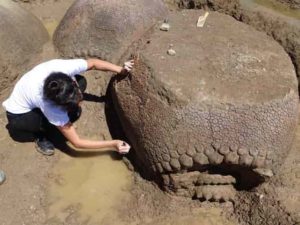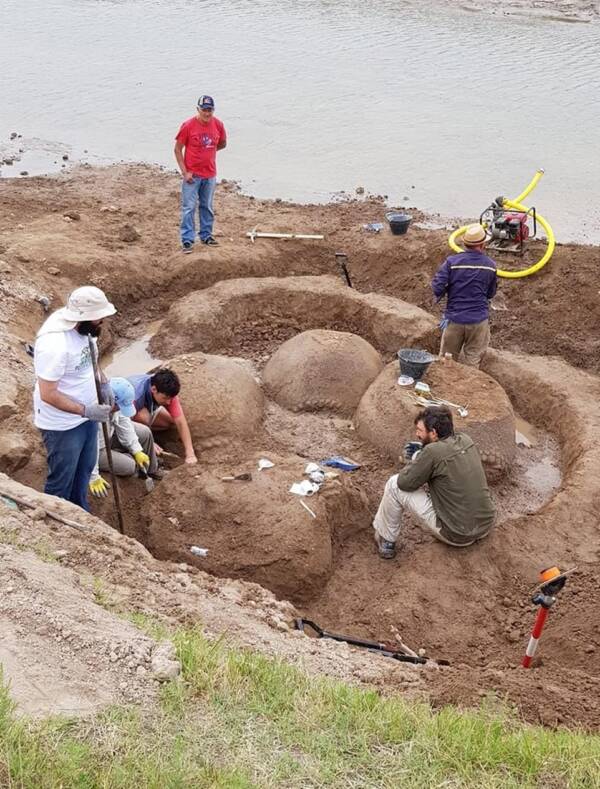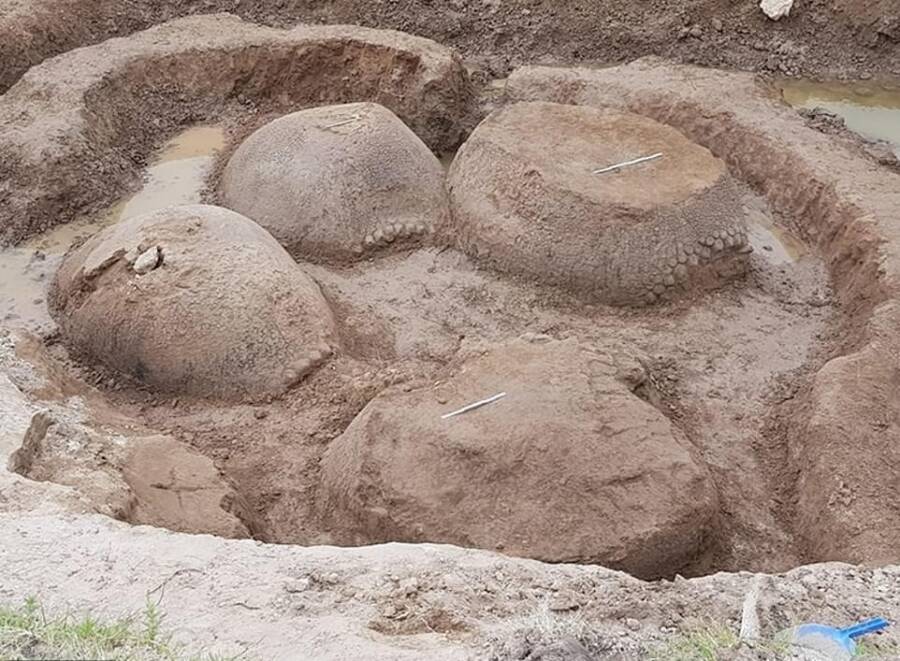A farmer has found the 20,000-year-old remains of four prehistoric armadillos that grew to the size of a car at the bottom of a dried-out riverbed.
Local media said that the farmer stumbled across the ‘four glyptodonts’, a heavily armoured mammal that lived during the Pleistocene epoch and were relatives of present-day armadillos.


They developed in South America around 20 million years ago and spread to southern regions of North America after the continents connected several million years ago.
The large fossils were discovered on a dried riverbed in the Argentine capital Buenos Aires and experts from the Institute of Archaeological and Palaeontological Investigations of the Pampa Quaternary (Incuapa-Conicet) will spend the next week extracting the remains.
Archaeologist Pablo Messineo told reporters that a man named Juan de Dios Sota was taking his cows to graze in a nearby field when he noticed the odd shapes on the dried riverbed as they did not appear to be the remains of horses or cows.

Messineo and a team of scientists arrived on the scene to dig out the prehistoric mega beast.
Messineo said: ‘We went there expecting to find two glyptodonts when the excavation started and then two more were found!
‘It is the first time there have been four animals like this in the same site. Most of them were facing the same direction like they were walking towards something.’
He added that the sizes indicate the group was comprised of two adults and two younglings.
The science team will require diggers to remove the shells as they can weigh up to one ton.
Recommended For You Early human habitat, recreated for first time, shows life was no picnic
The fossils will then undergo further research to establish their age and sex and possibly cause of death.
At the moment, it is believed the four glyptodonts lived around 20,000 years ago.
Glyptodonts were a genus of large heavily armoured mammals with a rounded, bony shell and squat limbs similar to a turtle.
They are believed to have weighed around 1,000 kilogrammes (2,205 lbs) and could grow to the size of a Volkswagen Beetle.
The animal’s remains have been found in Brazil, Uruguay and Argentina and it is believed they became extinct 10,000 years ago.
Based on their jaw morphology, Glyptodons were herbivores and they were also hairy with very slow movements due to their size.



